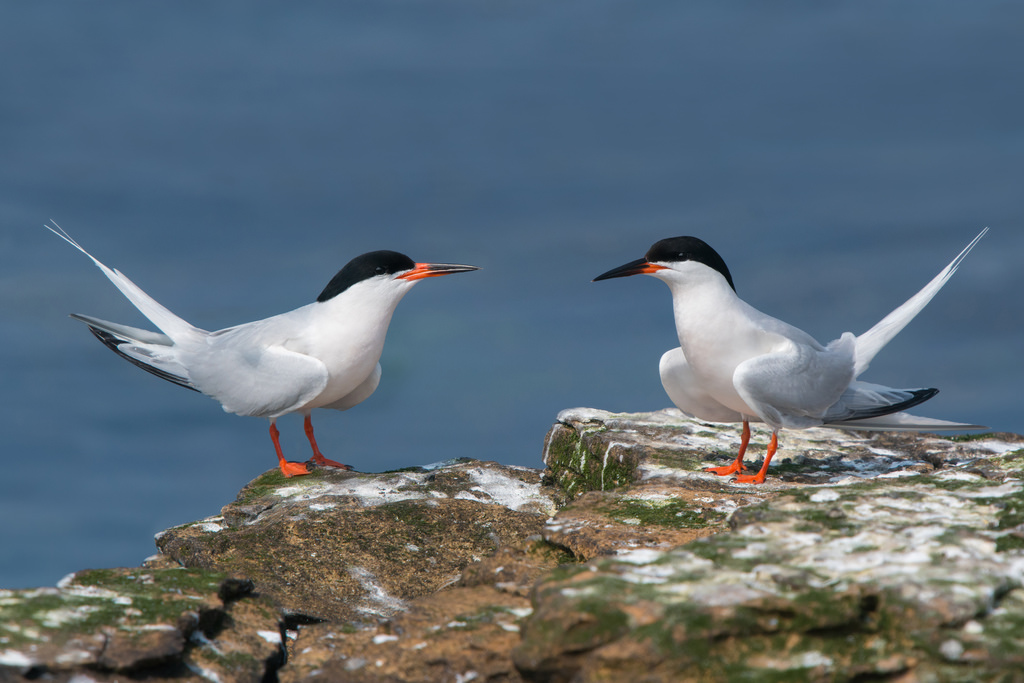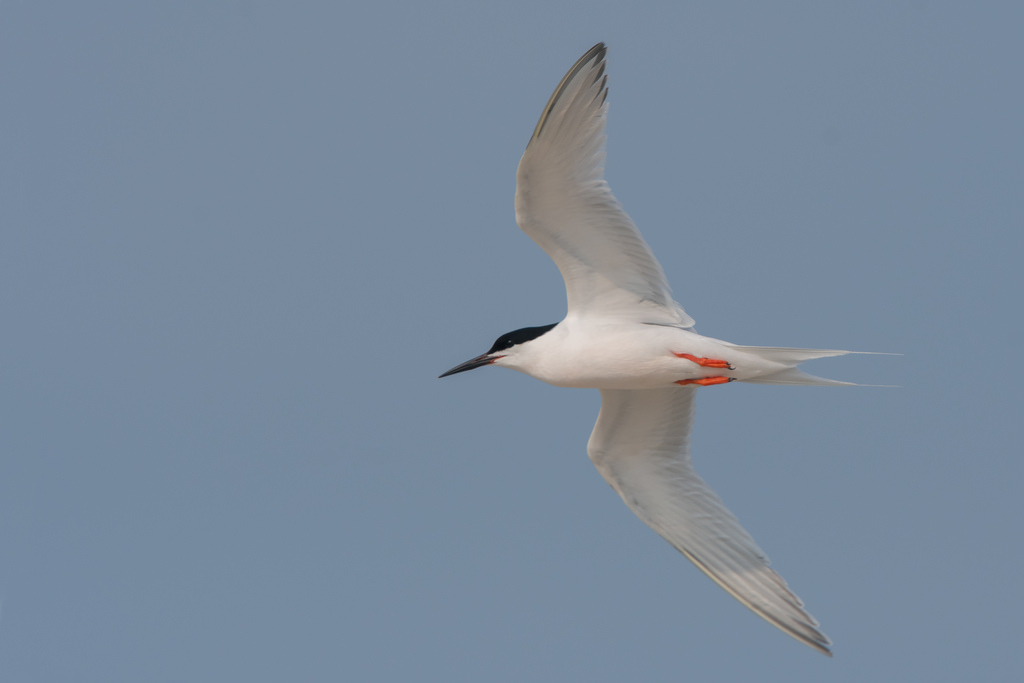
Tim writes: on 24th July 1812 Dr Peter McDougall was with two friends on the Isle of Cumbrae in the Firth of Clyde. They went out to two small islets in Millport Bay where terns were nesting. One of the party shot a tern and McDougall noticed it differed from other terns in having more black on its bill and whiter plumage. They collected a number and one was sent to George Montagu in Devon, who described the bird as new to science. Unfortunately for McDougall, Montagu got his name wrong so Roseate Tern still bears the name Sterna dougallii (as opposed to mcdougallii). Peter McDougall’s bad luck did not end there as he caught a fever and died two years later aged just 37. I notice on the BTO website it continues the error by saying the tern is named after Peter Dougall, and the French still call this tern La Sterne de Dougall. Unbeknownst to McDougall, there was almost certainly another undescribed species on that island as Arctic Tern was not described until 1819.
Roseate Tern is by far the rarest of the regular breeding terns in Britain. There are fewer than 150 pairs breeding in the whole of Britain, and the vast majority of those are at a single site in Northumberland. For comparison there are around 53,000 breeding pairs of Arctic Tern. I took these photographs in Northumberland in late July. You can see the large amount of black on the bills plus the long tail streamers that are much longer than the wing tips. Although the black on the bill recedes towards the tip as the season progresses, so the flying bird had an unusually black bill compared to the others.

Mark writes: this is a favourite bird of mine and one with which I was most involved in my early years at RSPB (see Fighting for Birds Chapter 3). The photo above also shows another characteristic of the bird which can help identification, even at long distances (though is not diagnostic) – the prominence of the legs in flight. Compared with Common Terns, with which Roseates often (indeed usually) nest in their colonies in the UK, Ireland, France, the Azores and the USA, the legs are much more often displayed in flight. This can be suggestive when viewing a melee of terns flying around on a distant offshore island.